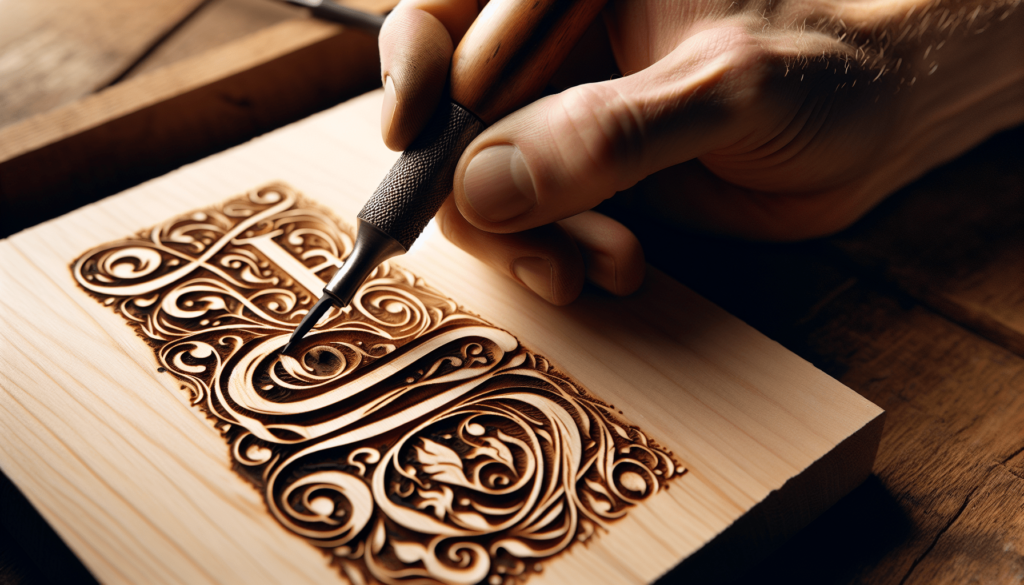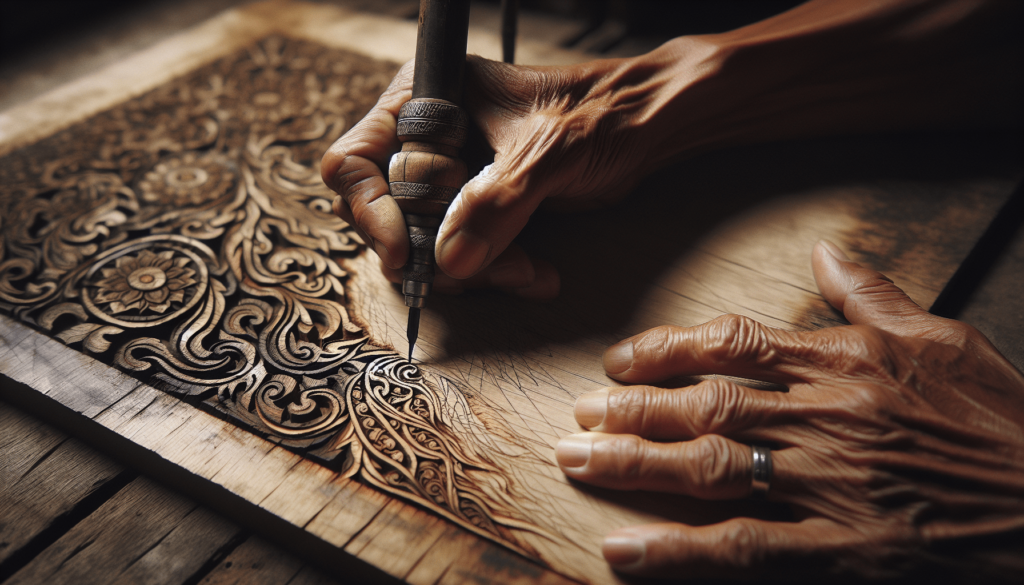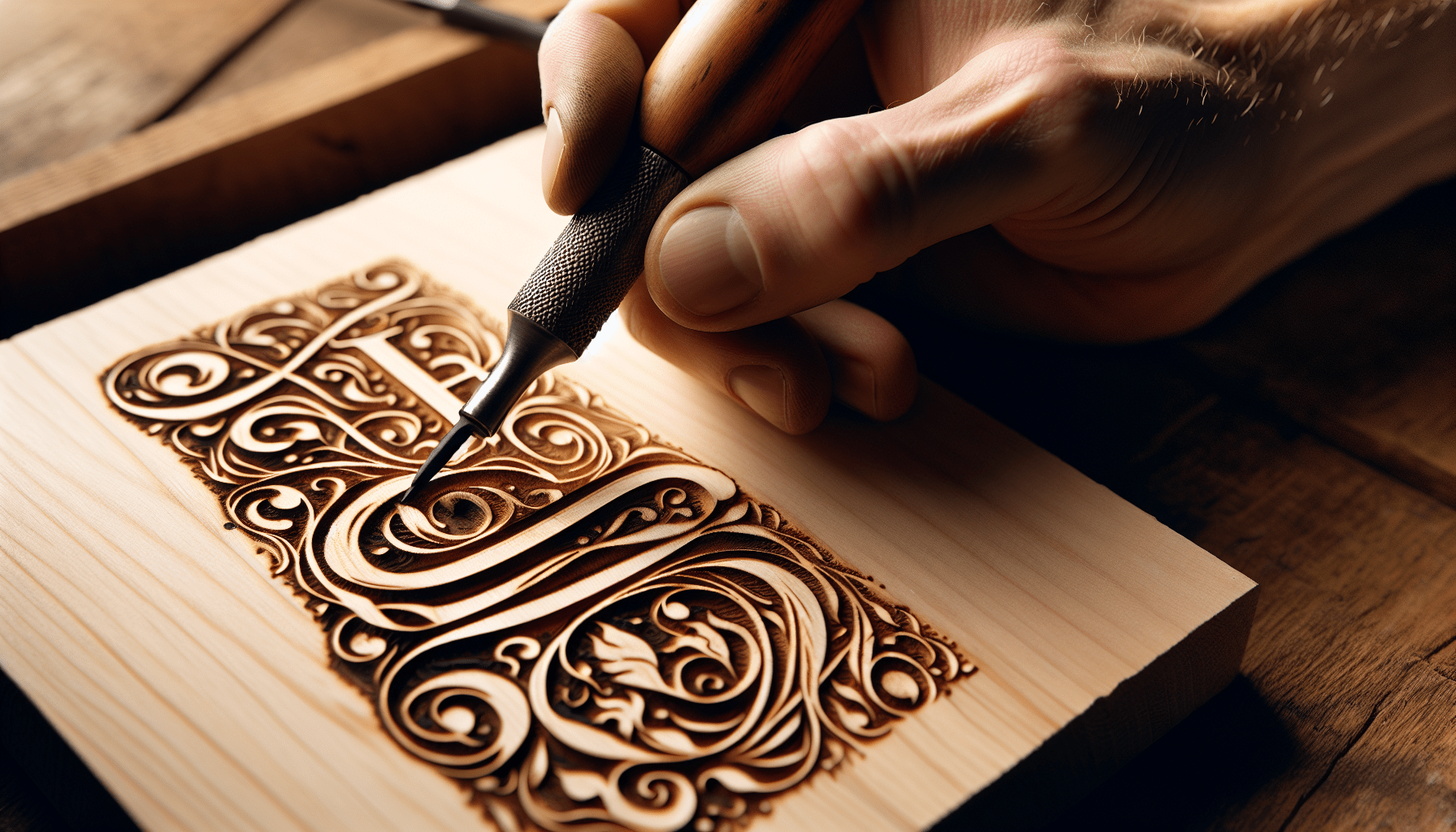Have you ever thought about what it’s called when you burn words into wood? It’s almost like watching thoughts become tangible, etched in the once-living canvas of a tree. This process, having roots deep in history and stretching across cultures, is called pyrography.

What is Pyrography?
Pyrography, from the Greek words “pur” (meaning fire) and “graphos” (meaning writing), is the art of decorating wood, or other materials, with burn marks resulting from the controlled application of a heated object, such as a poker. Essentially, it’s a way to turn wood into a storytelling device.
The Tools You Need
So, what do you need to start dabbling in pyrography? It’s simpler than you might think.
| Tool | Description |
|---|---|
| Woodburning Pen or Tool | This is the primary tool, essentially a pen that gets incredibly hot at its tip. |
| Variety of Tips | Different tips produce different effects; from fine lines to broad, smooth shading. |
| Wood | Not all wood is created equal for pyrography. Popular choices include basswood, birch, and maple. |
| Sandpaper | Prepping your wood surface with sandpaper ensures a smooth, burn-ready canvas. |
From a fancy, adjustable-temperature pen to the stagnant ones from craft stores, the tools range widely in price and versatility, but the basic principle remains the same.
The Technique
The actual process is as much about patience as it is about skill.
- Prepare Your Wood: Start by sanding your wood surface until it’s smooth.
- Draw Your Design: You can freehand with a pencil or use stencils if you’re as artistically challenged as I am.
- Heat Your Tool: Heating is crucial. You want it hot enough to burn but not so hot that you scorch the wood unintentionally.
- Start Burning: Here’s where your character really shines. Slowly but confidently trace the pencil lines you drew earlier. Remember, practice makes perfect.
The History of Pyrography
Pyrography has roots that trail back through various cultures and epochs. The indigenous tribes of Africa, Peru, and even China employed pyrography techniques, using heated metal rods or embers to decorate tools, art, and ceremonial objects.
Ancient Techniques
Interestingly, the Victorian era saw a popular resurgence of pyrography, albeit in a more refined manner. At this time, the term “pokerwork” was more commonly used, reflecting the rudimentary tools involved.
Ancient practitioners didn’t have the luxury of temperature control or easily interchangeable tips. They heated rudimentary implements over open flames to achieve intricate designs without the safety features we enjoy today. The meticulousness in their work reflects a deep relationship with both their materials and their subjects.
Pyrography in Modern Times
Modern technology has revolutionized the field. Today’s tools allow incredible precision, making it possible for professional artists to create works that resemble fine ink drawings more than woodburned art.
Types of Pyrography
Pyrography can be classified into several types, depending on the substrate:
| Type | Description |
|---|---|
| Wood Pyrography | The most traditional and popular form. It includes everything from furniture to art. |
| Leather Pyrography | Less common but equally striking; requires special tools due to leather’s properties. |
| Gourd Pyrography | Unique and often ethnic; gourds offer a curved surface adding an extra layer of complexity. |
| Paper Pyrography | High-risk, high-reward; requires low heat and extreme control. |
Wood Pyrography
When it comes to wood, the particular piece you choose can significantly affect your results. Factors such as grain pattern, density, and natural oils will change how the wood burns. A softer wood like basswood or pine will give you a smoother, more controllable burn, especially if you’re a beginner.
Leather and Gourd Pyrography
Leather and gourd surfaces introduce new techniques due to their variable textures. Leather requires a lower temperature setting compared to wood, as it can easily dry out and crack. On the other hand, gourds need a careful balance, as their round shape makes even lines more arduous.
Pyrography Safety Tips
It probably goes without saying, but handling a tool that can reach upwards of 900 degrees Fahrenheit has its hazards.
| Safety Tips | Description |
|---|---|
| Ventilation | Always work in a well-ventilated area. Burning wood releases fumes that are best avoided. |
| Protective Gear | Wear gloves and safety goggles. While it may look unnecessary, it’s better safe than sorry. |
| Fire Extinguisher | Keep one close. No one anticipates needing it until it’s too late. |
| Heat-Resistant Surface | Working over a heat-resistant mat can save your table and keep your project steady. |
Ventilation is Key
Trust me, the first time you inhale pyrography fumes will be the last time you forget ventilation. Working in an open area directly mitigates some of the added chemicals and wood dust.
Gear Up
Even the simple act of wearing gloves can change your pyrography experience. While it adds a layer of protection, it also gives you better grip and control. And those clear safety goggles? They stop unwanted wood splinters and dust from finding your eyes mid-project.

Benefits of Pyrography
We often talk about the method, the tools, and the safety measures, but what about the benefits of taking up pyrography?
Mental Health
Like many artistic endeavors, pyrography can be incredibly therapeutic. It forces you to slow down and focus, acting almost as a form of moving meditation. Every stroke is intentional, every burn calculated, making it an exercise in mindfulness.
Skill Development
From a skill perspective, you learn not just about burning wood, but also about design principles, shading techniques, and even patience. Each element you create hones a different part of your artistic and technical expertise.
Pyrography Projects for Beginners
If you’re new to this art form, it’s best to start with simple projects. Think along the lines of coasters, wall plaques, or decorative spoons. Basic geometric shapes or simple floral designs are more forgiving of small mistakes.
Step-by-Step Beginner Project: Coaster Set
Here’s a quick guide for your first project – a set of wooden coasters.
- Select Your Wood: Softwoods like basswood are ideal, as they burn cleaner and smoother.
- Prepare Your Tools: Choose a basic tip for your woodburning pen.
- Sand Down the Coasters: Ensure they are smooth to the touch.
- Sketch Your Design: Simple patterns like concentric circles or leaves work well.
- Burn the Design: Start slow and deliberate. Remember, you’re building confidence here.
- Seal the Coasters: Use a clear sealant to protect your design and make the coasters durable.
Moving to Advanced Pyrography
Once you’ve got some basic pieces under your belt, you might feel ready to tackle more advanced projects.
Portraits and Scenes
One of the most gratifying advanced exercises is creating a landscape or portrait. These projects challenge you to use a variety of techniques, from shading to layering textures, which add depth and realism.
Mixed Media Pyrography
If you’re an adventurous spirit, mix things up—literally. Incorporate elements like paint, stains, or even carving to enhance your work. By playing with various media, you add complexity and uniqueness to each project.
Pyrography Community and Resources
One of the joys of any hobby is the community aspect. Engaging with fellow pyrographers can provide inspiration, mentorship, and camaraderie.
Online Forums and Social Media
Forums like Reddit’s r/pyrography or specialized Facebook groups offer invaluable advice and support. Sharing your work and receiving feedback from experienced artists can propel your skills forward.
Workshops and Courses
If you’re someone who learns best through hands-on experience, attending workshops or courses is an efficient way to improve your skills rapidly. You can often find these through local art schools or community centers.
The Cultural Significance of Pyrography
Pyrography isn’t just an art form; it has rich cultural significance. Across the globe, different cultures have used wood-burning techniques for ritualistic, decorative, and practical purposes.
Indigenous Art
In Native American cultures, pyrography is often used in combination with other techniques to tell stories or mark significant events. Similarly, African and South American tribes have utilized pyrography to decorate tools and ceremonial items.
European Traditions
In Europe, particularly during the Victorian era, pyrography became a fashionable pastime, one that crossed class boundaries. From simple household items to extravagant pieces of art, pyrography reflected both societal trends and individual creativity.
Conclusion
So, what is it called when you burn words into wood? Pyrography, an ancient yet ever-evolving art form that blends fire and creativity to bring life to wood. It’s a testament to our innate desire to leave our mark, to turn the mundane into something extraordinary. Whether you’re a beginner feeling the excitement of your first project or a seasoned artist pushing the boundaries of what’s possible, pyrography offers a journey as rewarding and intricate as the art itself. So why not give it a try and see what stories you can burn into the tapestry of time?

